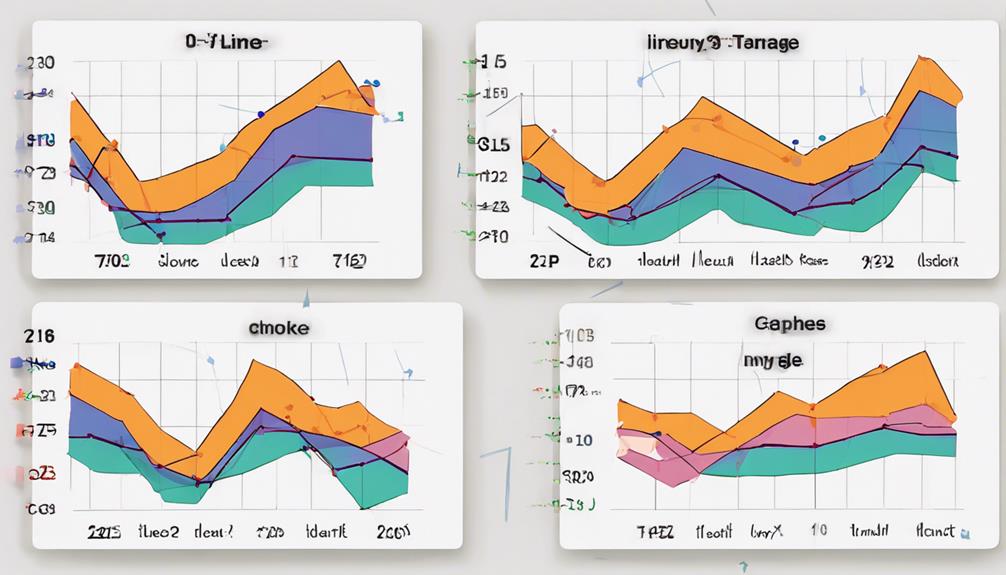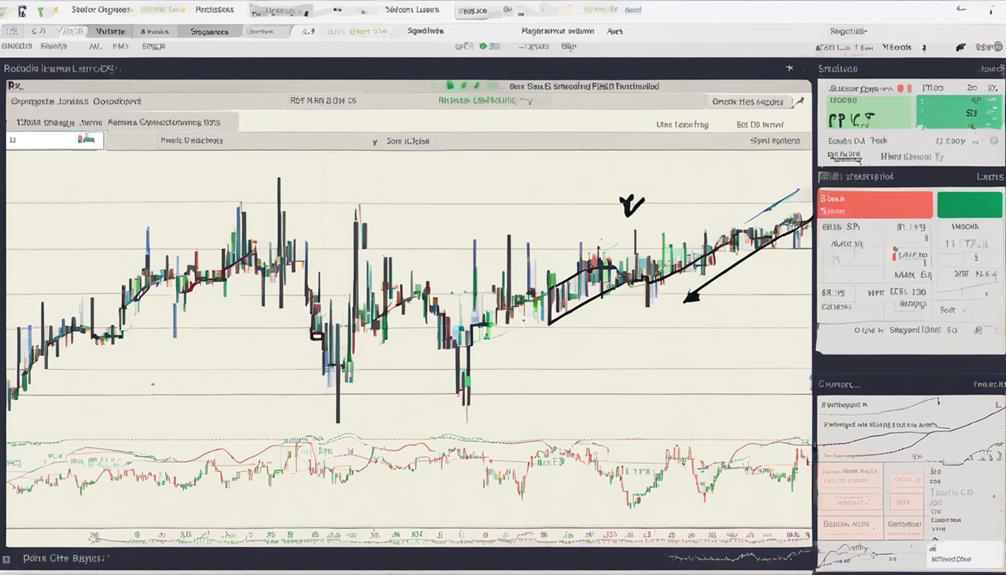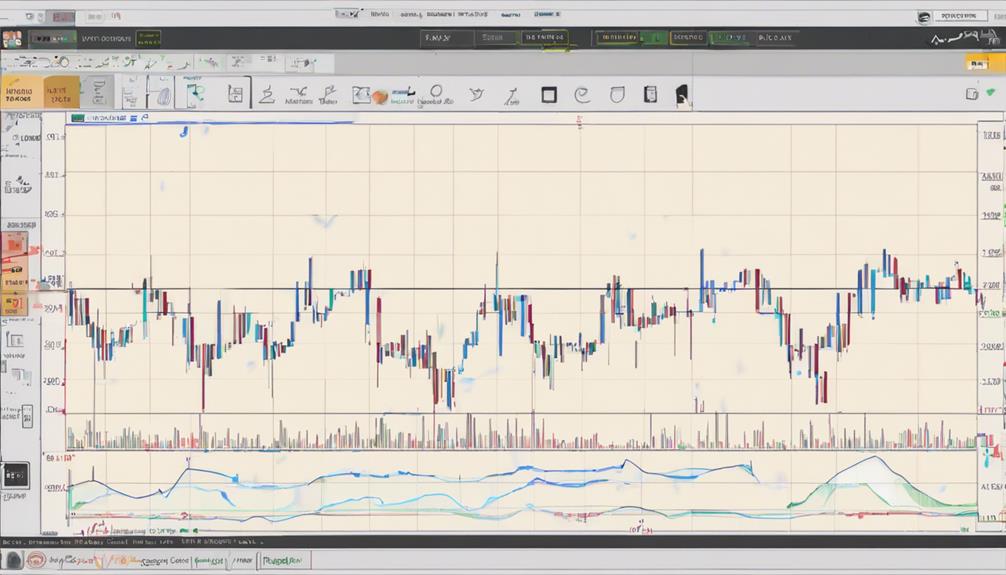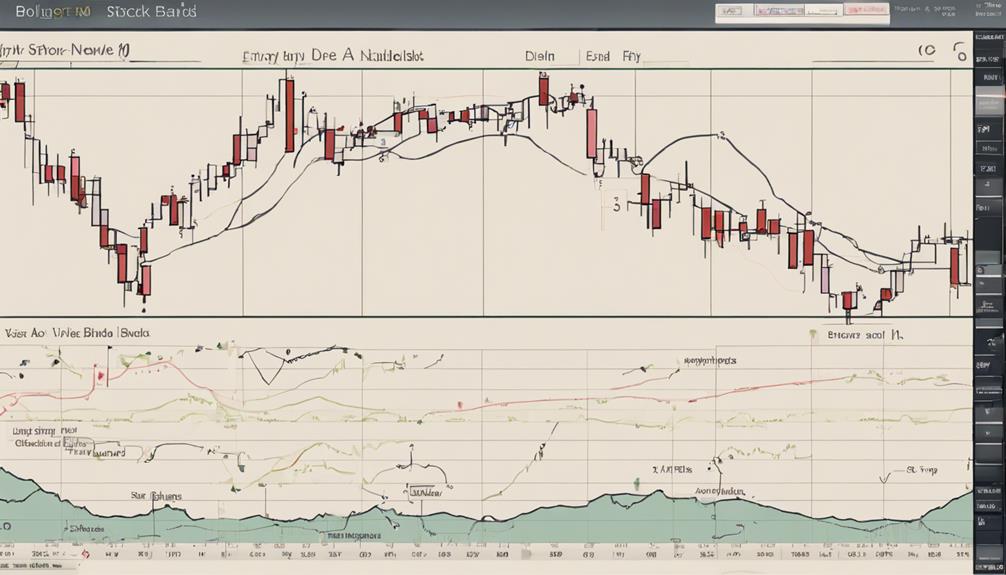When it comes to navigating the complexities of market trends, understanding the basics of trend following indicators is crucial.
From deciphering Moving Averages to harnessing the power of MACD and RSI, these tools can be your compass in the volatile world of trading.
By grasping these essential tips, you can unlock a deeper level of insight into market dynamics and potentially elevate your trading game to new heights.
Importance of Trend Following Indicators
Trend following indicators are essential tools for traders seeking to navigate the dynamic landscape of the financial markets with precision and confidence. These indicators, such as moving averages and MACD, are crucial for analyzing price trends and determining optimal entry and exit points in trading.
By utilizing long-term moving averages and other trend indicators, traders can effectively gauge the strength and stability of trends, assisting in making informed decisions. The objective data provided by these indicators helps confirm the direction of price movements, enhancing trading strategies and risk management.
Understanding the importance of trend following indicators equips traders with the necessary tools to improve their trading performance and increase the likelihood of successful trades in the market.
Understanding Moving Averages

To grasp the essence of Moving Averages, one must delve into their ability to smooth out price data and reveal trends over specific time frames effectively. When understanding Moving Averages, consider the following:
- Moving averages help identify trends: They provide a clear picture of the market direction by smoothing out price fluctuations over a chosen time period.
- Using Moving Averages in strategies: Traders utilize crossovers between different moving averages to generate buy or sell signals, indicating potential entry or exit points in the market.
- Filtering noise with Moving Averages: By focusing on the overall trend direction, traders can filter out short-term price fluctuations and concentrate on the broader market movement for informed decision-making.
Utilizing Relative Strength Index (RSI)

When utilizing the Relative Strength Index (RSI) in your trading analysis, consider its role as an oscillator that gauges the speed and magnitude of price movements. RSI ranges from 0 to 100 and is commonly used to identify overbought and oversold conditions.
An RSI above 70 indicates overbought levels, while below 30 suggests oversold conditions. Traders often watch for RSI divergences from price action as potential signals of upcoming trend reversals. Combining RSI with other technical indicators, such as moving averages, can enhance the accuracy of trade signals.
Implementing MACD Effectively

For effective implementation of MACD in your trading strategy, focus on understanding its components and how they interact to signal market trends.
Tips for Implementing MACD Effectively:
- MACD Line and Signal Line Crossovers: Utilize these crossovers to generate buy and sell signals based on trend direction.
- Histogram Analysis: Pay attention to the histogram bars to gauge the momentum of a trend and potential trend reversals.
- Divergences with Price Movements: Look for inconsistencies between the MACD indicator and price movements to anticipate shifts in market trends.
Maximizing Bollinger Bands

Maximizing Bollinger Bands involves leveraging their three bands, based on standard deviations, to enhance market analysis and trading strategies. Trend traders often use Bollinger Bands in conjunction with moving averages to identify potential trend reversals and price breakouts.
These bands are effective tools for gauging volatility, especially when the bands widen, indicating increased market fluctuations. Traders can set stop-loss levels based on Bollinger Bands to manage risk effectively in trend-following strategies.
What Are the Essential Tips for Understanding Trend Following Indicators Basics?
Understanding the basics of trend following indicators is crucial for successful trading. Some essential tips for trend following indicators include understanding the different types of indicators, using multiple indicators for confirmation, and practicing patience to avoid making impulsive decisions based on short-term fluctuations. Mastering these tips can lead to more informed trading decisions.
Frequently Asked Questions
What Are the Basics of Trend Following?
To understand the basics of trend following, focus on buying during upswings and selling during downtrends, capturing market movements systematically. By monitoring trends, traders seek profitable entry and exit points, aiming to ride trends for maximum profit potential.
What Are the Indicators for Determining Trend?
To determine trends, use Moving Averages, MACD, RSI, OBV, and Aroon Indicator. These indicators help you spot trend changes by comparing price data, identifying momentum shifts, and confirming trends based on volume and strength signals.
Which Is the Best Trend Following Strategy?
For the best trend following strategy, consider your preferences, risk tolerance, and trading style. Vary strategies based on timeframes, market conditions, and assets. Popular indicators like moving averages, MACD, RSI, and Bollinger Bands can enhance effectiveness.
What Are the 4 Types of Indicators?
To understand market trends effectively, utilize key indicators like moving averages, MACD, RSI, and OBV. These tools help gauge momentum, overbought/oversold conditions, and volume confirmation. Mastering these indicators is crucial for informed trading decisions.
Conclusion
In the vast sea of market trends, navigating with the help of trend following indicators is like having a reliable compass guiding your trading journey.
Just as a skilled sailor uses the stars to chart a course, mastering Moving Averages, RSI, MACD, and Bollinger Bands can steer you towards profitable opportunities.
By honing your understanding of these indicators, you can set sail confidently in the ever-changing waters of the financial markets.
